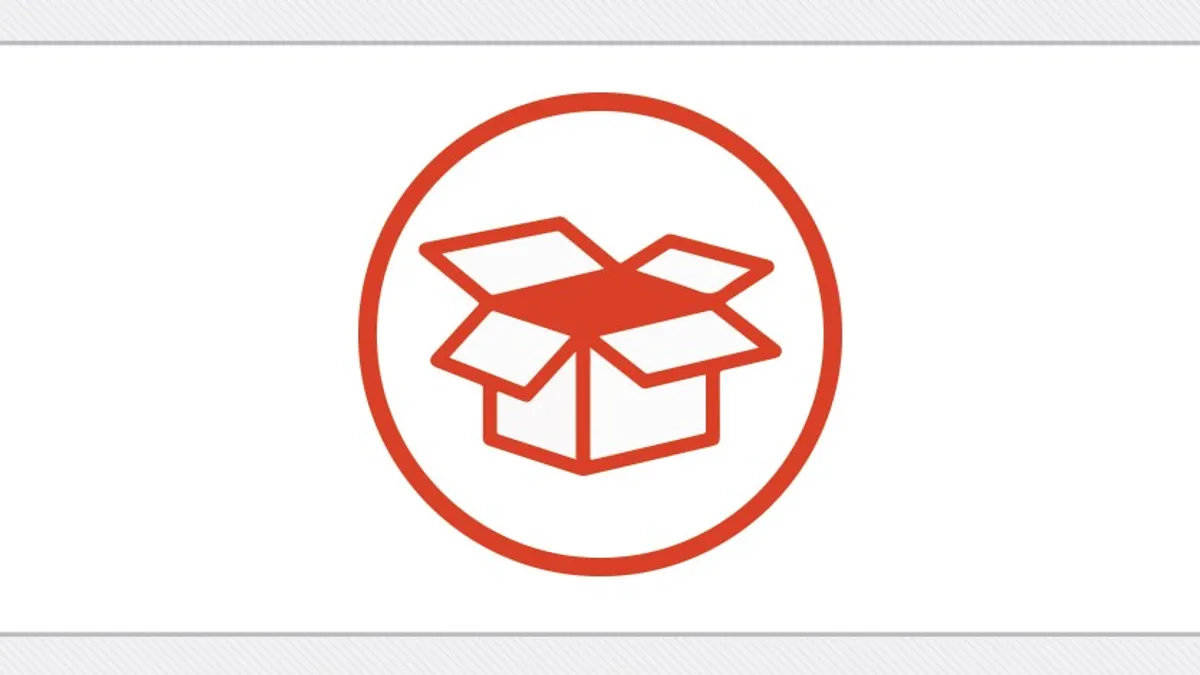Dive Brief:
- Weeks after announcing the expansion of its Restock next-day delivery service to the Dallas-Fort Worth and Denver areas, Target on Thursday said it would make it available in Atlanta, Chicago, Los Angeles, New York, Philadelphia, San Francisco, St. Louis and Washington, D.C./Baltimore.
- Target said the next-day service is now live in 10 markets and would be available in the Bay Area in October. By then it would cover roughly one-fifth of the U.S. population, the retailer said.
- So far, the items most often ordered through Restock have been on-the-go snacks, beverages, cereal, macaroni and cheese and paper towels, according to Target.
Dive Insight:
With this rollout, Target has expanded Restock's to some 70 million people, the retailer said Thursday.
Restock users choose from more than 15,000 common products and add them to a box holding up to 45 pounds — about the size of a shopping cart — and a “capacity tracker” shows how much room is left. Orders by 2 p.m. Monday through Friday are delivered the next day for $5. “Guests need to keep daily essentials stocked, but finding time to buy them is tough — and it can be even more of a challenge when you’re talking about large, bulky items,” Dawn Block, Target senior vice president of digital, said in a corporate blog post.
Target’s Restock effort comes amid a major revamp of stores and digital operations. There’s evidence that the retailer's merchandising, brick-and-mortar and omnichannel initiatives are resonating with shoppers, and Restock could push the advances further.
"The competition between the major online retailers is only increasing, and with Target now offering this service to any Target consumer in the metro areas that Restock is offered (REDcard holder or not) and having a lower flat fee compared to Prime Pantry, this might entice Prime members to order their everyday items elsewhere," Maddison Tailor, director of marketing at Ansira, told Retail Dive in an email.
Although Restock's delivery fee is competitive with Amazon's similar pantry service, it could be a deterrent, especially in light of Amazon's emerging Instant Pickup service, says Jim Fosina, CEO of Fosina Marketing Group. Worse, the retailer could be impeding impulse purchases in stores, he told Retail Dive in an email.
Still, the retailer in the second quarter demonstrated that it's making improvements without too much damage to its finances. Improvements to stores and new programs like the now-expanded Restock effort are noticeable and are paying off. "Their omnichannel strategy is on-point via online and mobile," Jane Hali & Associates analysts said in an email to Retail Dive. "Consumers can also integrate their use of the mobile app along with their in-store experience."
Target is also lowering prices, especially in consumables, and that’s boosted its private-label grocery sales, according to a note from GlobalData Retail Managing Director Neil Saunders. Its differentiation in apparel and home goods is even more impressive, but Target often fails to present them adequately in stores, Saunders said.














